
#NEWS. We are compiling here a list of our most frequently asked questions and requested resources. We have been updating this page several times a day and adding new frequently asked questions and resources as they emerge. Please check back periodically. We are working on organizing this information more effectively by creating a new “COVID-19” Hot Topic section on our website. We hope to roll that out in a week or two.
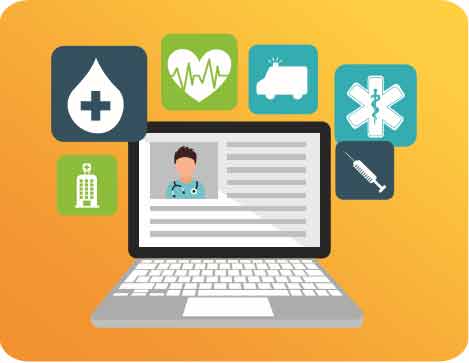 Some texts here.
Some texts here. 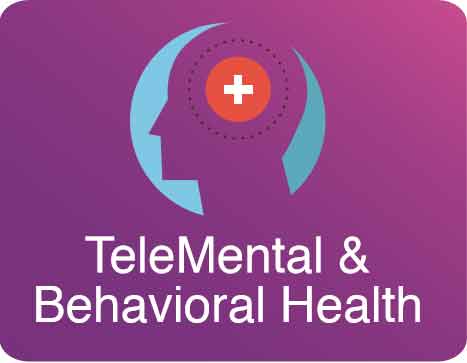 Some texts here.
Some texts here. 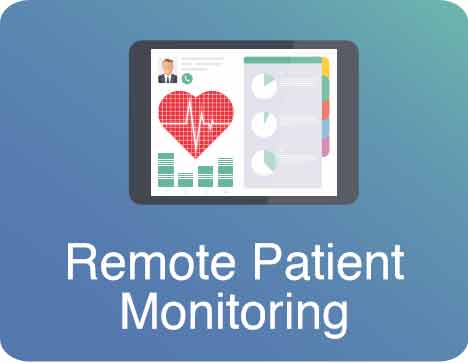 Some texts here.
Some texts here.  Some texts here.
Some texts here. 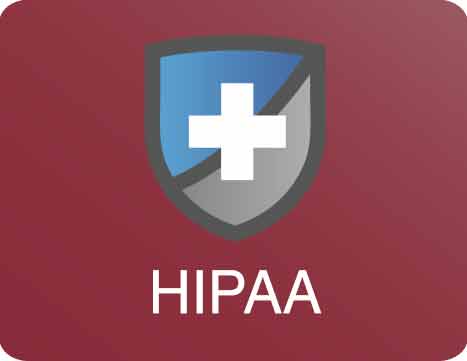 Some texts here.
Some texts here. 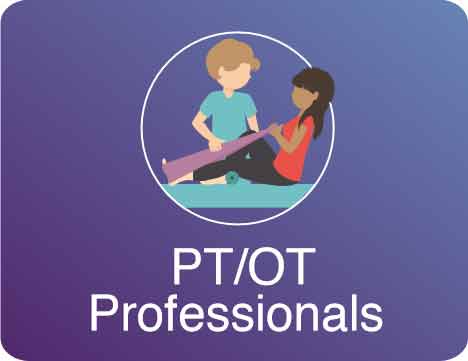 Some texts here.
Some texts here. 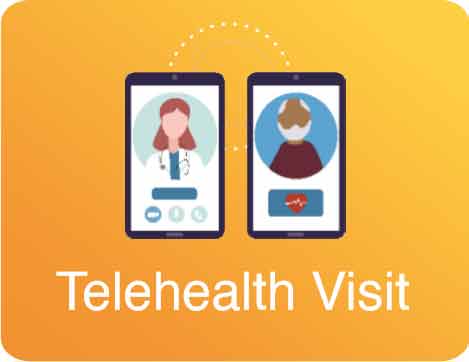 Some texts here.
Some texts here. 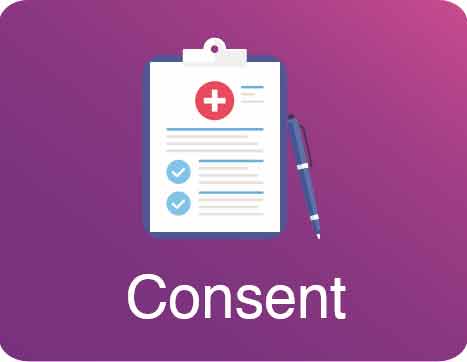 Some texts here.
Some texts here. 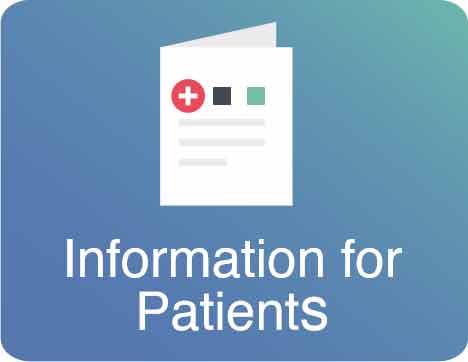 Some texts here.
Some texts here. 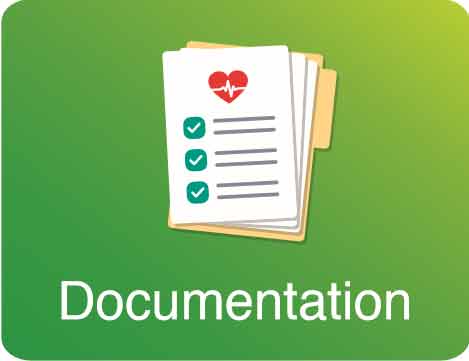 Some texts here.
Some texts here.
STARTING A TELEHEALTH PROGRAM
What is the Different Between Telemedicine, Telehealth and Remote Monitoring?
Telemedicine typically refers to the practice of medicine using technology to deliver care at a distance. A physician/clinician in one location uses a telecommunications infrastructure to deliver care to a patient at a distant site. Telemedicine is a subset of telehealth.
Telehealth refers to a broader scope of remote health care services than telemedicine. Telemedicine refers specifically to remote clinical services, while telehealth can refer to remote non-clinical services (for example, clinician to clinician consults, patient education services, interprofessional care teams, etc)
Remote patient monitoring refers to using technology to gather patient data outside of traditional healthcare settings, for example, using digital scales, glucometers, pulse ox, etc…to monitor a patient’s condition while they are at home (or wherever else they may be living).
I Don’t Know What I Don’t Know. Where Do I Start?
- First check out this COVID-19 Telehealth Toolkit to get some ideas on how telehealth can be used in response to COVID-19, an understanding of some of the big picture policy issues, and for a list of additional resources.
- Next, if you are one of many clinicians and practices getting ready to ramp up with telehealth offerings in response to COVID-19, this approximately 45 minute video “Telehealth Essentials Checklist For Those Getting Started” will help walk you through the essentials you’ll need to have in mind (and get into place) as you get started. No time for the video or want something in paper format? Download Telehealth Essentials
If you want to kill two birds with one stone and get trained while obtaining 1 credit/contact hour of CME/CE credits, this Foundations of Telehealth Course is also a good option for you (there is a $95 fee associated with this course).
- Third, check out all the resources and information found on this page. Got additional questions after taking a look? Join us for our Virtual Office Hours. We provide Virtual Office Hours related to “Telehealth Basics/Telemental Health” as well as on “Telehealth Technology or Vendors” several times a month.
- Finally, can’t make our Virtual Office Hours? You may also Request Technical Assistance using our online form (Hot Tip: Due to the overwhelming interest and need for telehealth during this pandemic, using the online form will generally get you a quicker response than calling and leaving a voicemail message. It is much more difficult to return calls after hours and on weekends, but we CAN respond to your emails. The more specific you are with your question or request (e.g., what type of provider you are, what type of setting you work in, what you specifically need), the better we will be at getting you timely and useful information.)
Do You Have Any Specific Resources for TeleMental/Behavioral Health Providers Who Are Getting Started?
- We have a great website called the Telebehavioral Health Center of Excellence with a large number of online resources just for you.
- If you are one of the many behavioral health providers and practices getting ready to ramp up with telehealth offerings in response to COVID-19, this approximately 40 minute video “Telebehavioral Health: A Quickstart Guide to Direct-To-Consumer Care” will help walk you through what you absolutely need to know to get going:
- If you still have more questions after looking through the above resources, make sure you take advantage of our Virtual Office Hours.
- If you are serious about telemental/behavioral health, you can get yourself Board Certified as a Telemental Health Provider (9 modules, $50 per module): Click Here or Click Here
- The American Psychiatric Association has developed a Telepsychiatry Toolkit that you might find useful.
Do You Have Any Specific Resources for Providers Interested in Getting Started with Remote Patient Monitoring?
- We have a great Remote Patient Monitoring Toolkit on our website dedicated to helping providers get started. Make sure you download the actual RPM Toolkit (it’s an 8 page PDF document with lots of great information).
Do You Have Any Specific Resources for PT/OT and Speech Therapy Professionals Who Are Getting Started with Telehealth?
- The American Physical Therapy Association has put together a number of resources: Click Here.
- The American Occupational Therapy Association has also put together a number of resources: Click Here.
- This is an informative article about Telehealth OT that you might also find useful: Click Here
- The American Speech-Language-Hearing Association has put together a number of resources on telepractice: Click Here
- We have a recorded webinar on “Innovation and Impact with Speech Language Pathology Telepractice: Click Here
Do You Have Any Specific Resources Related to Telehealth Technology and HIPAA?
- If you have a budget for this sort of thing and the luxury of taking a little time, we would recommend your using our Vendor Selection Toolkit.
- The American Telemedicine Association, in partnership with the Consumer Technology Association, has started putting together this Digital Health Care Directory to connect the health care industry with digital health technologies so you can get a feel for the massive number of options available in the marketplace. The directory has a mixture of both telehealth technology vendors and service providers.
- If you are looking solely for telehealth service providers, the Southwest Telehealth Resource Center has put together this Service Provider Directory for Telemedicine and Telehealth.
- Since most of you are frantically trying to get started yesterday, if you don’t currently have any technology that you could use for a telehealth visit, please know that as part of its response to the pandemic, a change was made regarding HIPAA. The HHS Office for Civil Rights (OCR) is exercising enforcement discretion and waiving penalties for HIPAA violations against health care providers that serve patients in good faith through everyday communications technologies, such as FaceTime or Skype. See FAQs on Telehealth and HIPAA during the COVID-19 Nationwide Public Health Emergency.The intent of the OCR response to the pandemic is for providers to act responsibly and to make every effort to comply (“in good faith”) with HIPAA in terms of technology selection and communications channels. This is particularly important when working with patients who might have sensitive health information. If you are using everyday communications technologies without encryption on a public wi-fi network, this is extra risky and you need to seriously weigh the risks against the benefits. If the situation is urgent/emergent, and you don’t have other methods, by all means. However, if the situation is less urgent and you can arrange for a platform with encryption and/or move to a more private setting, you would be strongly advised to do so. With that said, please check your State policies, as not every state has waived their HIPAA requirements.
- To check your State policies, Click Here, select the state of interest and then scroll down to the lower half of the page to see the original guidance documents and any new guidance related to COVID-19. Alternatively, just go up to the top menu bar and select your state under “Our Region”.
- For a quick introduction to HIPAA Compliance and Telehealth, check out this brief video:
- If you don’t have a budget for telehealth technology, the following are technology vendors who are offering either free or significantly reduced prices as a response to COVID-19. Please note that MATRC is not in a position to either endorse or recommend any of the vendors on this list. We strongly encourage you to do your due diligence when making a vendor selection. There may be other vendors also making available platforms for free or at a significantly reduced price in response to COVID-19. These are the ones that have been brought to our attention thus far:
- Free access to Vivovitals remote patient monitoring platform for providers in the United States
- Free access to Bluestream virtual care platform
- Free temporary Vidyo video communications platform license
- Free white-labeled RingMD telemedicine platform for doctors, healthcare groups and other organizations negatively affected by the outbreak.
- Free Cloudbreak Health unified telemedicine and video medical interpretation solution app with free service for hospitals
- Free basic and significantly reduced pricing on full featured Adaptive Telehealth telemental health platform license
- Free clinical communication solution secure one-way communication updates through AngelEye Health
- Free access to CompuGroup Medical US CGM ELVI web-based video platform
- Free use of Orbita COVID-19 Screening Chatbot & Knowledge Base through June 2020
- Significantly reduced pricing on Connected Healthcare Solutions (CHS) Health Guidance Platform for remote monitoring (reduced one time startup fee with no minimum quantities or contractual requirements – and use as many or as few devices as you need with no additional cost)
Do You Have Any Specific Resources on How to Provide a Telehealth Visit?
Thinking about Workflow
- This less than 10 minute video snippet will help you think about key workflow considerations related to both the patient and provider experience as you get you started:
- The American Academy of Pediatrics has provided Swimlane Workflow Diagrams (see Appendix A) for Provider-Patient (after hours), Provider-Patient (during office hours) and for Provider to Other Medical Facility/Office.
Thinking about Telehealth Etiquette
- Here is an outstanding quick video for providers to capture some of the most important aspects of videconferencing etiquette best practices developed by the State of Hawaii Department of Health Genomics Section and Western States Regional Genetics Network (UH7MC30774-01-00) in collaboration with the Pacific Basin Telehealth Resource Center:
- Additionally, this free Telehealth Etiquette Video Series provides an excellent introduction to how a telehealth encounter should (and should not) be conducted! If you have never seen or participated in a telehealth encounter, we would strongly recommend running through these very real life situations.
Thinking about the Telehealth Physical Exam
- This article “Why the Telemedicine Physical is Better than You Think” gives some great perspective as well as some very practical ideas about what can be done even without peripheral devices.
- This is an excellent online training developed by Thomas Jefferson University Sidney Kimmel Medical College on Telemedicine: Conducting an Effective Physical Exam Online Course ($100 for this 1 hour online course that includes CME/CE)
Thinking About Telehealth Consent
- Some states require you to get consent for telehealth visits and others do not. Some states require very specific components in the consent process. To see if yours does, Click Here and then follow the instructions below:
- Using the filter boxes:
- Select your state of interest
- Select “All Categories” (this is the default)
- Select “Consent” as your topic
- Click on “Apply” and soon you will see if/where there are consent requirements within your state’s policies. Sometimes it is only required as part of Medicaid reimbursement, other times it is part of state law, and other times it is embedded in health professions regulations for specific types of providers. MATRC maintains guidance documents related to state Medicaid programs and SOME health professions regulations and guidance documents for states in the MATRC coverage area. To see if what you might be looking for is available on our website, Click Here, select the state of interest and then scroll down to the lower half of the page to see the various State policy guidance documents. Alternatively, go up to the top menu bar and select the state of interest under “Our Region”.
- We think it’s good practice to get consent, whether it is required or not. The Federation of State Medical Boards has established a Model Policy for the Appropriate Use of Telemedicine Technologies in the Practice of Medicine. This document defines several components of consent that is worth taking a look at. Here is a Sample Consent Form in English and a Sample Consent Form in Spanish (credit goes to California TRC). Adapt this form to your clinical use case and your state’s policy requirements. You may not need every element or you may need to add an element. Unless your state explicitly requires the consent form to be signed (most places do not), it may be done verbally. Make sure you have a written process and protocol developed that is considered standard operating procedure. Once that is in place, you just need to note in the medical record that your consent process was used and that the patient provided consent. More about documenting a telehealth visit below.
Thinking about Documentation of a Telehealth Visit
- To document a telehealth visit, you should include everything you usually need to document for the CPT or E&M code being billed, PLUS…
- Patient’s location (enough detail to satisfy a Medicare audit, i.e., eligible facility in an eligible geographic location.
- With all the exceptions being made during this pandemic with the waiver, this is not as important during the state of emergency, but in general you should do this so you might as well make it a practice!
- If the patient’s home is the location of service, and the address is already somewhere in the medical record, then you just need to include in your note that the visit took place at the patient’s home. You do not need to capture the address again.
- It is always good practice to verify the patient’s location at the start of every virtual visit. Do not assume they are at home! Remember that if the patient experiences an emergency/crisis when they are in the middle of a visit with you, if you don’t have easy access to their physical location address (a PO Box will not work), it will be impossible to contact first responders and have them deployed to the patient’s location.
- Provider’s location (under normal circumstances, this would be the usual place of practice – for most, it would be the office location, but if home is a routine or the only office location, then the provider’s home location should be registered as a site of service and used). With that said, please note that during the period of the COVID-19 emergency declaration, CMS is allowing physicians and other practitioners to render telehealth services from their home without reporting their home address on their Medicare enrollment while continuing to bill from their currently enrolled location.
- That the encounter was conducted via telehealth
- Start and stop time
- That the patient consented (unless otherwise documented). Please refer to your State’s laws/licensing board regulations and guidance documents regarding specific requirements. See section on consent above for how to do this.
- Any other providers involved, including telepresenters
- Optional: A reason for using telehealth (medical or otherwise), and any criteria used to evaluate whether the case was appropriate for telehealth.
Other Useful Resources for Clinicians and Practices
- The American Medical Association has developed a “Quick Guide to Telemedicine in Practice” that has a section on Practice Implementation.
- The American Academy of Pediatrics has provided a number of Sample Documents, including a Telehealth Visit Protocol, Patient Recruitment Sample Letter, Swimlane Workflows and Start-up Checklist for Connecting a Specialist to a Private Practice.
- The Federation of State Medical Boards has established a Model Policy for the Appropriate Use of Telemedicine Technologies in the Practice of Medicine. This document was designed for State licensing boards, but is actually an excellent starting point for policy within an organization or practice.
- The American Telemedicine Association has developed Practice Guidelines for Live, On Demand Primary and Urgent Care. Depending on the type of provider you are and the type of service you offer, there are other specific clinical guidelines and best practices for telehealth that have been developed. There are too many documents to list here. Please contact us using our online Technical Assistance Form and let us know your specific specialty or interest area(s).
- If you or others in your practice will be providing any kind of logistical/administrative support for telehealth visits, this is a great training (FREE, but registration required) Telehealth Coordinator Online Training
- The Weitzman Institute is offering a series of Project ECHO sessions for FQHCs on Preparing for COVID-19. One of the sessions is entitled “Develop and Define Your Telehealth Strategy”.
Do You Have Anything I Can Give My Patients/Clients About Telehealth/Virtual Visits?
- How Patients Can Engage Telehealth is a very simple patient/consumer facing fact sheet about telehealth.
- While this Infographic about Virtual Healthcare for Patients/Consumers was created to help patients navigate the emergence of Direct-to-Consumer telehealth companies and not with COVID-19 in mind, it has some really good practical information that you might find useful.
- Here is an outstanding video for patients developed by the State of Hawaii Department of Health Genomics Section and Western States Regional Genetics Network (UH7MC30774-01-00) in collaboration with the Pacific Basin Telehealth Resource Center to help patients understand telehealth, what to expect and how to prepare.
TELEHEALTH POLICY AND COVID-19
What Telehealth Related Federal Medicare, Licensure and Other Policy Changes Have Taken Place As a Result of the Pandemic?
For a summary of the most up to date information on Policy Changes at the Federal Level
What Telehealth Related State Medicaid, Licensure and Other Policy Changes Have Taken Place As a Result of the Pandemic?
For a summary of the most up to date information on Policy Changes at the State Level
TELEHEALTH AND LICENSURE/INTERSTATE PRACTICE
Patients From Multiple States See Me In My Office. Can I Continue to See Them Using Telehealth During This Pandemic?
In general, a clinician must be licensed in the state where the patient/client is physically located at the time of service. President Trump declared an emergency on March 13, 2020. As a result, the Centers for Medicare & Medicaid Services (CMS) has authorized the 1135 Waiver that took effect retroactively to March 1, 2020. This waiver is limited in scope to conditions of participation and payment for Federal health care programs such as Medicare, Medicaid, and the Children’s Health Insurance Program (CHIP). Authorization of this waiver alone DOES NOT waive the requirement for physicians and other healthcare providers to maintain licensure in states where they are practicing a licensed profession, including via telehealth. What the waiver does is that it gives States the option of being able to do so. State law continues to govern whether a provider is authorized to provide professional services in that state without holding an active license from that state’s medical board. Many state medical boards have created mechanisms that either waive or expedite state licensure requirements in response to the pandemic. See the Federation of State Medical Boards (FSMB) List of States Waiving Licensure Requirements/Renewals in Response to COVID-19. The document also includes hyperlinks to the original source guidance documents.
TELEHEALTH AND PRESCRIBING OF CONTROLLED SUBSTANCES
- Due to the declaration of a public health emergency, the Drug Enforcement Administration (DEA) has made changes to their policies regarding its rules related to prescribing. Review DEA Information on Telemedicine. With that said, please check your State policies, as many States also have laws and regulations governing telehealth and prescribing and these laws and regulations may not have been changes in response to COVID-19.
TELEHEALTH AND SUBSTANCE ABUSE DISORDER TREATMENT SERVICES
- The Substance Abuse and Mental Health Services Administration (SAMHSA) has issued COVID-19 Public Health Emergency Response and 42 CFR Part 2 Guidance
- The DEA has provided this Policy Guidance on Use of Telephone Evaluations to Initiate Buprenorphine Prescribing
- The DEA has provided this Policy Guidance on Use of Telemedicine While Providing Medication Assisted Treatment (MAT)
TELEHEALTH REIMBURSEMENT AND COVID-19: BILLING AND CODING
How Do I Bill and Code for Telehealth Services?
- Billing for Telehealth Encounters: An Introductory Guide on Fee-For-Service focuses primarily on fee-for-service Medicare, but provides an example of one Medicaid program and touches on provide payer billing as well. In general, you would use the same CPT or E&M codes as for an in-person encounter, but to indicate that the service was provided via telehealth, each payer type has their own schema pertaining to a specific modifier or POS code (sometimes even both) they want you to use. In addition, this guidance document also discusses how to bill and code for several types of services that CMS does not consider “telehealth”. These include: Remote Communication Technology, Virtual Check-In, Remote Evaluation of Pre-Recorded Patient Information and Interprofessional Internet Consultation.
- The American Medical Association Special Coding Advice During COVID-19 Public Health Emergency provides a series of 11 different telehealth scenarios and walks through their potentially applicable Medicare billing codes. This is a really nice resource to help you think through a variety of scenarios!
- The American Academy of Dermatology Coding for Telehealth Encounters provides a flow chart that may be useful for some of you as well.
Help Me Understand Medicare Reimbursement for Telehealth:
- Fee for Service Medicare and Telehealth Reimbursement
- Prior to the COVID-19 pandemic, there were a large number of restrictions placed on Fee-for-Service Medicare reimbursement for telehealth services. These restrictions included:
- The originating site (location of the patient). Providers could only get reimbursed for telehealth services if the patients receiving those services were located at specific types of facilities (e.g., hospitals, FQHCs, physician and practitioner offices) AND those facilities were located in specific geographic locations. There were a few exceptions to this rule, including treatment for Substance Use Disorder, Telestroke and Dialysis for End-State Renal Disease)
- The distant site practitioner (type of provider providing the telehealth service). Only a specific subset of provider types were eligible to serve as distant site providers (e.g., Physicians, NPs, PAs). FQHCs and RHCs were specifically excluded from being able to serve as distant site practitioners.
- Types of service. Only a limited set of HCPCS/CPT Codes were eligible for telehealth reimbursement.
- In response to the COVID-19 pandemic, and as a result of the President’s emergency declaration, emergency legislation and waivers have been put into place, making significant changes to Medicare telehealth policies. These changes have been fluid and taking place at a rapid pace. Below is a summary of some of the most significant changes. It is recommended that you also read through the linked guidance documents for additional information that may apply to your particular clinical use case.
- Use this document to understand Fee for Service Medicare Telehealth Services and Click Here to see a compilation of questions to CMS related to telehealth reimbursement for FFS Medicare and their responses.
- For more information about Medicare Changes Specific to the Waiver Announced on March 17, 2020 (helpful hint – scroll down to the bottom half of the page for specific billing codes and to the very bottom of the page for a helpful summary comparison chart of services – this includes some guidance around those services that CMS does not consider “telehealth” like Virtual Check-Ins and E-Visits). See Medicare Telehealth FAQs in relationship to the March 17 announcement.
- The most significant change with this waiver was the removal of all of the originating site facility and geographic restrictions. This allows the patient to be located anywhere at the time of service, including their home.
- The CARES Act signed into law by the President on March 27, adds FQHCs and RHCs as eligible “distant site” practitioners for telehealth services and allows them to bill Medicare Part A for such services effective for the duration of the public health emergency. These services will be paid an amount calculated from the fee-for-service schedule and not the prospective payment system. We are still awaiting guidance on how this will become operationalized.
- This CMS COVID-19 Emergency Declaration Blanket Waivers for Health Care Providers document summarizes all of the blanket waivers for health care providers as part of the emergency declaration. The majority are not related to telehealth, but there are a few related to telehealth that may be significant for some:
- There is a blanket waiver for certain conditions of participation in telemedicine for hospitals and CAHs
- There is a blanket waiver for physicians and non-physician practitioners to perform in-person visits for nursing home residents and allow visits to be conducted via telehealth options
- There is a blanket waiver of clinicians needing to report their home address on Medicare enrollment while rendering telehealth services from home.
- There is a waiver of two aspects of Emergency Medical Labor and Treatment Act (EMTALA) requirements, one of which would allow emergency departments of hospitals to use telehealth services to quickly assess patients to determine the most appropriate site of care, freeing emergency space for those that need it most. This also allows hospitals, psychiatric hospitals, and critical access hospitals (CAHs) to screen patients at a location offsite from the hospital’s campus to prevent the spread of COVID-19.
- On March 30, 2020 CMS announced another set of sweeping changes. Those changes may be found in this document: Physicians and Other Clinicians: CMS Flexibilities to Fight COVID-19. A brief summary of a few of the most significant changes may be found here:
- Prior to the COVID-19 pandemic, there were a large number of restrictions placed on Fee-for-Service Medicare reimbursement for telehealth services. These restrictions included:
-
-
- CMS will now allow for more than 80 additional services to be furnished via telehealth. During the public health emergencies, individuals can use interactive apps with audio and video capabilities to visit with their clinician for an even broader range of services. This link takes you to the location of the zip file where you can find the full list of Covered Telehealth Services during the COVID-19 pandemic.
- Please note that while restrictions have been lifted on many types of services, they have NOT been lifted on who is considered an eligible distant site practitioner (with the exception of FQHCs and RHCs)
- The list of clinicians who can provide Virtual Check-Ins and E-Visits has been expanded, and these visit types can now be provided to both new and established patients. In addition, a broad range of clinicians may now use telephone only (without video) for certain CPT codes (98966 -98968; 99441-99443). We are awaiting further guidance on which CPT codes this would apply to.
- Frequency limitations have been removed for a number of telehealth service CPT codes.
- CMS is allowing physicians to supervise their clinical staff using virtual technologies when appropriate, instead of requiring in-person presence and also allowing hospitals to use other practitioners such as PAs and NPs to the fullest extent possible.
- CMS is making it clear that clinicians can provide remote patient monitoring services to patients with acute and chronic conditions, and can be provided for patients with only one disease.
- CMS is loosening “Stark Law” (physician self-referral) law restrictions.
- CMS is allowing telehealth to fulfill many face-to-face visit requirements for clinicians to see their patients in inpatient rehabilitation facilities, hospice and home health.
- CMS published this Interim Final Rule document providing more guidance on how to bill and code in response to the above changes. One of the most significant items to note is as follows:
- CMS is instructing physicians and practitioners who bill for Medicare telehealth services to report the POS code that would have been reported had the service been furnished in person and to add the GT modifier. This is being done to mitigate the problem of the professional fee being unbundled and removing the facility portion of the fee resulting in a lower reimbursement rate. However, in this document, they also say that they will continue to allow the 02 POS code while maintaining the facility payment rate for telehealth visits should practitioners choose to do so. So as of right now, you may code a telehealth visit with either the 02 POS code or the office visit POS code with the GT modifier. However, using the office visit POS code with the GT modifier might be more beneficial for some in terms of the reimbursement rate. We shall see if anything changes when the final rule is published.
Please keep in mind that the document specifically notes “This HHS-approved document will be submitted to the Office of the Federal Register (OFR) for publication and has not yet been placed on public display or published in the Federal Register. The document may vary slightly from the published document if minor editorial changes have been made during the OFR review process. The document published in the Federal Register is the official HHS-approved document.
- CMS is instructing physicians and practitioners who bill for Medicare telehealth services to report the POS code that would have been reported had the service been furnished in person and to add the GT modifier. This is being done to mitigate the problem of the professional fee being unbundled and removing the facility portion of the fee resulting in a lower reimbursement rate. However, in this document, they also say that they will continue to allow the 02 POS code while maintaining the facility payment rate for telehealth visits should practitioners choose to do so. So as of right now, you may code a telehealth visit with either the 02 POS code or the office visit POS code with the GT modifier. However, using the office visit POS code with the GT modifier might be more beneficial for some in terms of the reimbursement rate. We shall see if anything changes when the final rule is published.
-
- Accountable Care Organization (ACO) and Medicare Telehealth Reimbursement
- CMS has developed this Medicare Shared Shavings Program Telehealth Factsheet just for you!
- Medicare Advantage (MA) Plans and Medicare Telehealth Reimbursement
- CMS released final rules for changes to MA plans regarding telehealth in April 2019. The Center for Connected Health Policy has put together this Final Rules for Medicare Advantage Plans and Telehealth Fact Sheet.
- In response to the pandemic, MA Plans were informed by CMS through this memo that if they wish to expand coverage of telehealth services beyond what has already been approved by CMS, they will exercise its enforcement discretion until it is determined that it is no longer necessary in conjunction with the COVID-19 outbreak.
- What if I am an FQHC or RHC? In response to the pandemic, providing telehealth services as a distant site provider is considered “in scope” for an FQHC according to this guidance from BPHC. Addtionally, the CARES Act signed into law by the President on March 27, adds FQHCs and RHCs as eligible “distant site” practitioners for telehealth services and allows them to bill Medicare Part A for such services effective for the duration of the public health emergency. These services will be paid an amount calculated from the fee-for-service schedule and not the prospective payment system. We are still awaiting further guidance on how this will be operationalized.
- HRSA issued the Program Assistance Letter called Telehealth and Health Center Scope of Project in January 2020 prior to the emergency declaration making FQHC telehealth as distant site providers “in scope” for FQHCs. During this time of emergency, this document needs to be understood within this framework.
- In this Interim Final Rule, CMS explicitly allows FQHCs/RHCs to use online digital E/M codes for an established patient (99421-99423).
- What if I am an ESRD Provider? CMS has developed this ESRD Provider Telehealth and Telemedicine Tool Kit. It has been updated with the 1135 Waiver Information.
- What if I am a Long-Term Care Nursing Home Provider? CMS has developed this Long-Term Care Nursing Homes Telehealth and Telemedicine Tool Kit. It has been updated with the 1135 Waiver Information.
- I Submitted a Telehealth Claim and It Was Denied. Now What? First make sure that the claim did not violate the restrictions on who can serve as a distant site provider and that the claim was for for an eligible service. You may have to toggle back and forth between Fee for Service Medicare Telehealth Services, Medicare Changes Specific to the Waiver and Physicians and Other Clinicians: CMS Flexibilities to Fight COVID-19 guidance documents if you are billing FFS Medicare. If you are pretty confident that you have been compliant with the various guidance documents, it is possible that there was a breakdown in communication or misinterpretation of guidance somewhere between CMS and the Medicare Administrative Contractor (MAC) and on down to the individuals who handle the day to day processing of claims. There are multiple MACs and each covers a geographic jurisdiction and handles the processing of medical claims. You will need to contact the MAC for your region and share with them the waiver guidance documents.
If you have done all of these things and were still denied, please let us know. We also welcome finding out about other significant challenges related to Medicare reimbursement for telehealth services, specifically in relationship to your ability to provide and be reimbursed for patient care as a result of this pandemic. Please be very specific if you contact us (what type of facility/provider is doing the billing, what CPT/E&M codes are being billed, where the patient is getting care, what modifiers are being used and what the specific issue is that is creating the angst). We may be able to get quick attention to some of these issues from CMS if we are hearing the same issues from multiple providers.
Help Me Understand Medicaid Reimbursement for Telehealth:
Each State Medicaid program makes decisions on the types of restrictions they will place on originating sites, distant site practitioners and types of services. Some have very few restrictions, while others have many.
MATRC maintains guidance documents related to Medicaid and other policies for each state in the MATRC coverage area. We have made an effort to keep our website updated as we find out about waivers and other policy changes in response to the pandemic. Click Here, select the state of interest and then scroll down to the lower half of the page to see the original guidance documents and any new guidance related to COVID-19. Alternatively, go up to the top menu bar and select the state of interest under “Our Region”.
Help Me Understand Private Payer Reimbursement for Telehealth:
Most of the states in the MATRC region (DC, DE, KY, MD, NJ, VA) have passed “parity legislation”, meaning that if a service being provided and billed for is considered a covered service in a face to face situation, a commercial carrier may not deny coverage solely because the service was provided via telehealth. It has been reported that some commercial payers are requiring providers to use their platform/platform vendor in order to receive reimbursement.
A few states in the MATRC region do not have parity legislation (NC, PA, WV). For these states, it is up to the carrier to set its own policies regarding coverage. In this case, you would need to contact each commercial payer to ascertain their coverage policy. In response to the pandemic, several health plans that serve our region have announced that they will make telehealth more widely available or are offering telehealth services for free for a certain period of time. These are the ones that have come to our attention to date:
- Aetna – COVID-19 Service Enhancements
- Aetna – COVID-19 Approved Behavioral Health Telemedicine Services
- AmeriHealth New Jersey – COVID-19 Service Enhancements
- Anthem – COVID-19 Service Enhancements
- Blue Cross and Blue Shield Companies – COVID-19 Service Enhancements
- Blue Cross and Blue Shield of North Carolina – COVID-19 Service Enhancements
- Blue Cross and Blue Shield Federal Employee Program – COVID-19 Service Enhancements
- Capital Blue Cross – COVID-19 Service Enhancements
- CareFirst – COVID-19 Service Enhancements
- CareFirst BlueCross BlueShield – COVID-19 Service Enhancements
- Centene – COVID-19 Service Enhancements
- Cigna – COVID-19 Service Enhancements
- Geisinger Health Plan – COVID-19 Service Enhancements
- Highmark – COVID-19 Service Enhancements
- Horizon Blue Cross Blue Shield of NJ – COVID-19 Service Enhancements
- Humana – COVID-19 Service Enhancements
- Magellan Health – COVID-19 Service Enhancements
- Optima – COVID-19 Service Enhancements
- United Health Care – COVID-19 Telehealth Services
- United Health Care – COVID-19 Physical, Occupational and Speech Therapy Telehealth
- Outpatient PT/OT/ST Codes for Telehealth Services
- Virginia Premier – COVID-19 Service Enhancements
Not all commercial carriers have the same schema regarding modifiers or POS codes. If guidance about billing codes is not provided in the above links and/or if your plan is not listed above, you will unfortunately need to contact each plan to find out which modifer or POS codes that they want you to use to indicate a telehealth visit.

